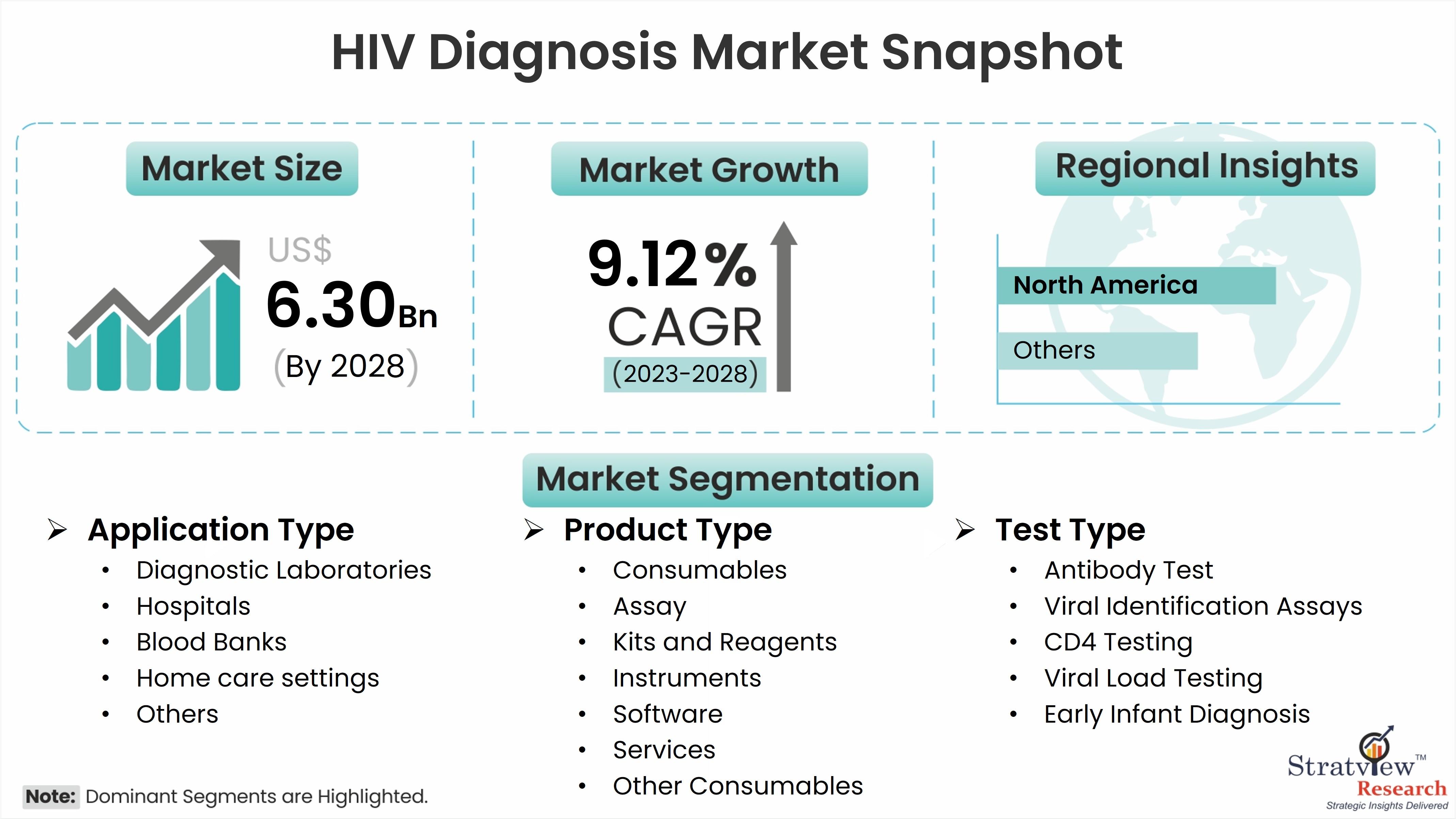Introduction:
In the ever-evolving landscape of healthcare, the field of HIV diagnosis is witnessing a revolutionary transformation, thanks to emerging technologies that are redefining the way we detect and manage this critical infection. The traditional methods of HIV diagnosis, while effective, are now being complemented and, in some cases, replaced by innovative approaches that offer faster results, increased accuracy, and enhanced accessibility. In this blog post, we will delve into the exciting world of emerging technologies shaping the HIV diagnosis market.
According to Stratview Research, The HIV Diagnosis Market was valued at US$ 3.73 billion in 2022 and is likely to grow at an exceptional CAGR of 9.12% during the forecast period of 2023-2028 to reach an annual market size of US$ 6.30 Billion by 2028.
Diagnosis of a blood sample to check the presence of HIV (Human Immunodeficiency Virus) in humans is regarded as an HIV diagnosis.
The diagnosis of HIV helps to detect the presence of HIV that causes AIDS (Acquired Immunodeficiency Syndrome). This is carried out by conducting tests on saliva, serum, or urine samples. These tests can detect antigens, antibodies, or RNA.
To learn more about the report, click here:
https://www.stratviewresearch.com/1629/HIV-diagnosis-market.html
Rapid Point-of-Care Testing:
One of the most significant advancements in HIV diagnosis is the rise of rapid point-of-care testing. Traditional testing methods often required samples to be sent to a laboratory, leading to delays in results and subsequent treatment. However, with the advent of rapid testing kits, healthcare providers can now deliver accurate results within minutes, enabling immediate counseling and, if necessary, initiation of antiretroviral therapy. This technology has proven particularly beneficial in remote or resource-limited settings, where access to traditional laboratory facilities may be limited.
Nucleic Acid Testing (NAT):
Nucleic Acid Testing (NAT) has emerged as a powerful tool in the early detection of HIV. Unlike traditional tests that look for antibodies produced by the immune system, NAT directly detects the genetic material of the virus. This allows for a shorter window period during which HIV can be detected, enhancing the chances of early intervention. NAT is particularly valuable in scenarios where early detection is crucial, such as in preventing mother-to-child transmission and identifying acute HIV infections.
Fourth-Generation Immunoassays:
Fourth-generation immunoassays represent another leap forward in HIV diagnostics. These tests not only detect HIV antibodies but also the p24 antigen, a protein produced by the virus in the early stages of infection. By targeting both the immune response and a viral protein, fourth-generation tests significantly reduce the window period, offering a faster and more accurate diagnosis. This technology has become a standard in many healthcare settings, contributing to more timely and reliable HIV detection.
Digital Health and Telemedicine:
The integration of digital health and telemedicine platforms is playing a pivotal role in improving access to HIV diagnosis and care. Mobile applications and online platforms now allow individuals to order self-testing kits discreetly, perform the test at home, and receive counseling remotely. This not only enhances privacy but also encourages more people to get tested, contributing to the global goal of increasing HIV testing rates. Telemedicine is also facilitating remote consultations, ensuring that individuals receive support and guidance throughout the testing process.
Artificial Intelligence (AI) in Diagnostics:
Artificial Intelligence (AI) is making significant strides in various sectors, and healthcare is no exception. In the realm of HIV diagnosis, AI is being employed to analyze vast datasets and identify patterns that may not be apparent to human observers. Machine learning algorithms are improving the accuracy of diagnostic tests and helping healthcare providers make more informed decisions. From predicting the risk of HIV transmission to optimizing treatment plans, AI is becoming an invaluable tool in the fight against HIV.
Multiplexed Assays:
Multiplexed assays enable the simultaneous detection of multiple infections, including HIV, in a single test. This not only streamlines the diagnostic process but also provides a comprehensive view of an individual's health status. Multiplexed assays are particularly beneficial in settings where co-infections are common, allowing healthcare providers to address multiple health concerns in a single testing session. This holistic approach contributes to a more efficient and patient-centered healthcare experience.
Conclusion:
The revolution in HIV diagnosis driven by emerging technologies is transforming the landscape of HIV care. From rapid point-of-care testing to the integration of artificial intelligence, these innovations are not only making diagnosis more accessible but also enhancing the speed and accuracy of results. As we continue to witness advancements in technology, it is clear that the future of HIV diagnosis holds promise for more efficient, personalized, and widespread testing, ultimately contributing to better outcomes for individuals living with HIV and the global effort to end the HIV/AIDS epidemic.
About Us
Stratview Research is a global market research firm, offering syndicated and custom research reports and growth consulting services. Our business intelligence and industry research reports offer clients insightful market data to aid strategic decision-making. These exclusive reports are the result of exclusive research methodology and are available for key industries such as chemicals, composites, advanced materials, technology, renewable energy, and more.
Stratview Research delivers custom research services across sectors. In case of any custom research requirements, please send your inquiry to [email protected] or connect with our experts at +1-313-307-4176.
